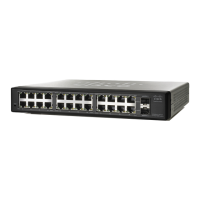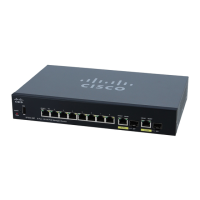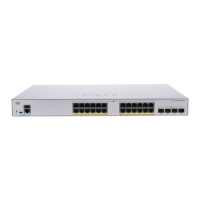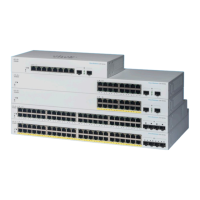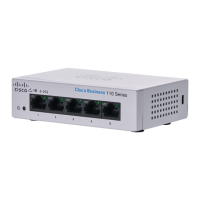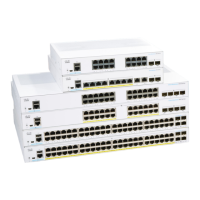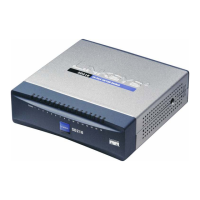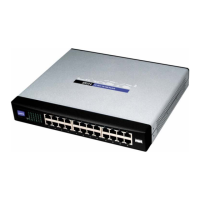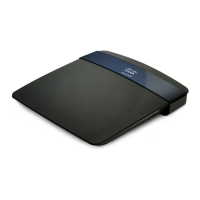Port Management
Configuring Green Ethernet
Cisco Small Business 200 Series Smart Switch Administration Guide 127
10
Green Ethernet Overview
Green Ethernet is a common name for a set of features that is designed to be environmentally friendly, and
to reduce the power consumption of a device. Green Ethernet is different from EEE in that Green Ethernet
energy-detect is enabled on all devices whereas only Gigabyte ports are enable with EEE.
The Green Ethernet feature can reduce overall power usage in the following ways:
• Energy-Detect Mode— On an inactive link, the port moves into inactive mode, saving power while
keeping the Administrative status of the port Up. Recovery from this mode to full operational mode is
fast, transparent, and no frames are lost. This mode is supported on both GE and FE ports.
• Short-Reach Mode—This feature provides for power savings on a short length of cable. After cable
length is analyzed, the power usage is adjusted for various cable lengths. If the cable is shorter than
50 meters, the device uses less power to send frames over the cable, thus saving energy. This mode
is only supported on RJ45 GE ports; it does not apply to Combo ports.
This mode is globally disabled by default. It cannot be enabled if EEE mode is enabled (see below).
In addition to the above Green Ethernet features, the 802.3az Energy Efficient Ethernet (EEE) is found on
devices supporting GE ports. EEE reduces power consumption when there is no traffic on the port. See
802.3az Energy Efficient Ethernet Feature for more information (available on GE models only).
EEE is enabled globally by default. On a given port, if EEE is enabled, short reach mode be disabled. If Short
Reach Mode is enabled, EEE be grayed out.
These modes are configured per port, without taking into account the LAG membership of the ports.
The device LEDs are power consumers. Since most of the time the devices are in an unoccupied room,
having these LEDs lit is a waste of energy. The Green Ethernet feature enables you to disable the port LEDs
(for link, speed, and PoE) when they are not required, and to enable the LEDs if they are needed (debugging,
connecting additional devices etc.).
On the System Summary page, the LEDs that are displayed on the device board pictures are not affected
by disabling the LEDs.
Power savings, current power consumption and cumulative energy saved can be monitored. The total
amount of saved energy can be viewed as a percentage of the power that would have been consumed by
the physical interfaces had they not been running in Green Ethernet mode.
The saved energy displayed is only related to Green Ethernet. The amount of energy saved by EEE is not
displayed.
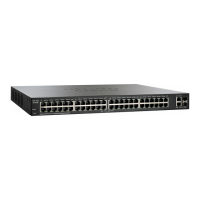
